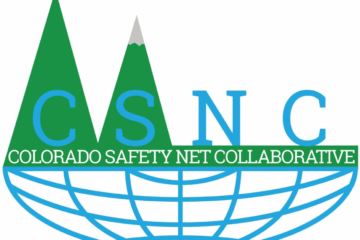Shining Light on Gaps in End-of-Life Care
There are variety of topics that we may choose to avoid discussing with our loved ones, with death being at the top of the list. While death is inevitable, the way we prepare for it does not have to be uncomfortable or uncertain. Advanced care planning (ACP) has become a powerful resource for helping patients and families navigate end-of-life (EOL) care with less stress and fewer medical interventions. To better understand how often this type of care planning is used and adhered to by the health care system, CIVHC researchers set out to explore whether other factors, beyond ACP, might influence the intensity and equity of care people receive in their final year of life.

Led by CIVHC’s Program Evaluation and Research team, the study used data from the CO APCD to analyze care received by nearly 93,000 adults in their last 30 days of life from 2018-2021. The analysis focused on individuals with moderate to very high morbidity levels, based on Johns Hopkins ACG RUB scores and examined utilization of three common markers of intensive end-of-life care:
- ICU stays
- Emergency department (ED) visits
- 30-day hospital readmissions
While earlier research has suggested that intensive medical services often dominate this time in life, this study digs deeper into who is receiving which types of care and why that matters.
“Our research highlights racial and geographic disparities in end-of-life care across Colorado,” said Darcy Holladay Ford, PsyD, MA, LPC, RDN, CIVHC’s Director of Research, and principal investigator and lead author on the project. “These racial and geography care variations point to a pressing need for policies and interventions that ensure everyone receives care aligned with their values and needs.”
Key Insights Include:
High-Intensity Care Still Common
- In the last 12 months of life, 28.3% of individuals were hospitalized, 18.6% visited the ED, and 7.1% were admitted to an ICU. While these interventions are sometimes necessary, they may not reflect patient preferences—especially when delivered without prior goals-of-care discussions.
Advance Care Planning (ACP) is Underutilized
- Only 31% of individuals claimed to have had an ACP conversation in the four years leading up to death. This figure likely underestimates true ACP engagement, since not all conversations are billed with the specific CPT codes used for tracking. Still, the low rate highlights a missed opportunity to support shared decision-making between elderly patients, their families, and their health care providers.
Hospice Use Linked to Better Outcomes
- Individuals enrolled in hospice were more likely to have ACP claims and had lower adjusted odds of ED visits and hospital readmissions. This finding reinforces existing evidence that timely palliative care can reduce the need for burdensome, unwanted interventions.
Insights into Action
This study highlights a crucial truth: while death is universal, the experience of dying in Colorado is not always equal. Geography, race and insurance status all influence the intensity and type of care people receive in their final year of life. This study points to the fact that important conversations regarding goals for end-of-life care for Coloradans are either happening or are being dismissed, especially those in rural areas or with limited or no insurance. This same group faces barriers to accessing hospice and palliative services.
Curious how COVID-19 affected end-of-life care costs in Colorado?
Learn from CIVHC’s Director of Research, Darcy Holladay Ford, PsyD, MA, LPC, RDN, in this brief and informative video.
However, the data also points to a path forward. Increasing the use of advanced care planning, expanding rural access to compassionate care, and addressing payer-based disparities can bring us closer to a more equitable, person-centered system where patients drive their health care decision-making at the end of life.
This is the first peer-reviewed research project published by CIVHC and conducted by CIVHC analysts using CO APCD data for an in-house analysis. The article abstract is available online through Sage Journals, and a full version can be accessed on the CIVHC website.
Additional Resources
If you’re a provider, payer, researcher, or community leader looking to better serve Coloradans at the end of life, CIVHC can help. Through access to CO APCD data, analytic support, evaluation and research services, we work with partners across the state to identify gaps, support better care, and reduce disparities.
Contact us at info@civhc.org
